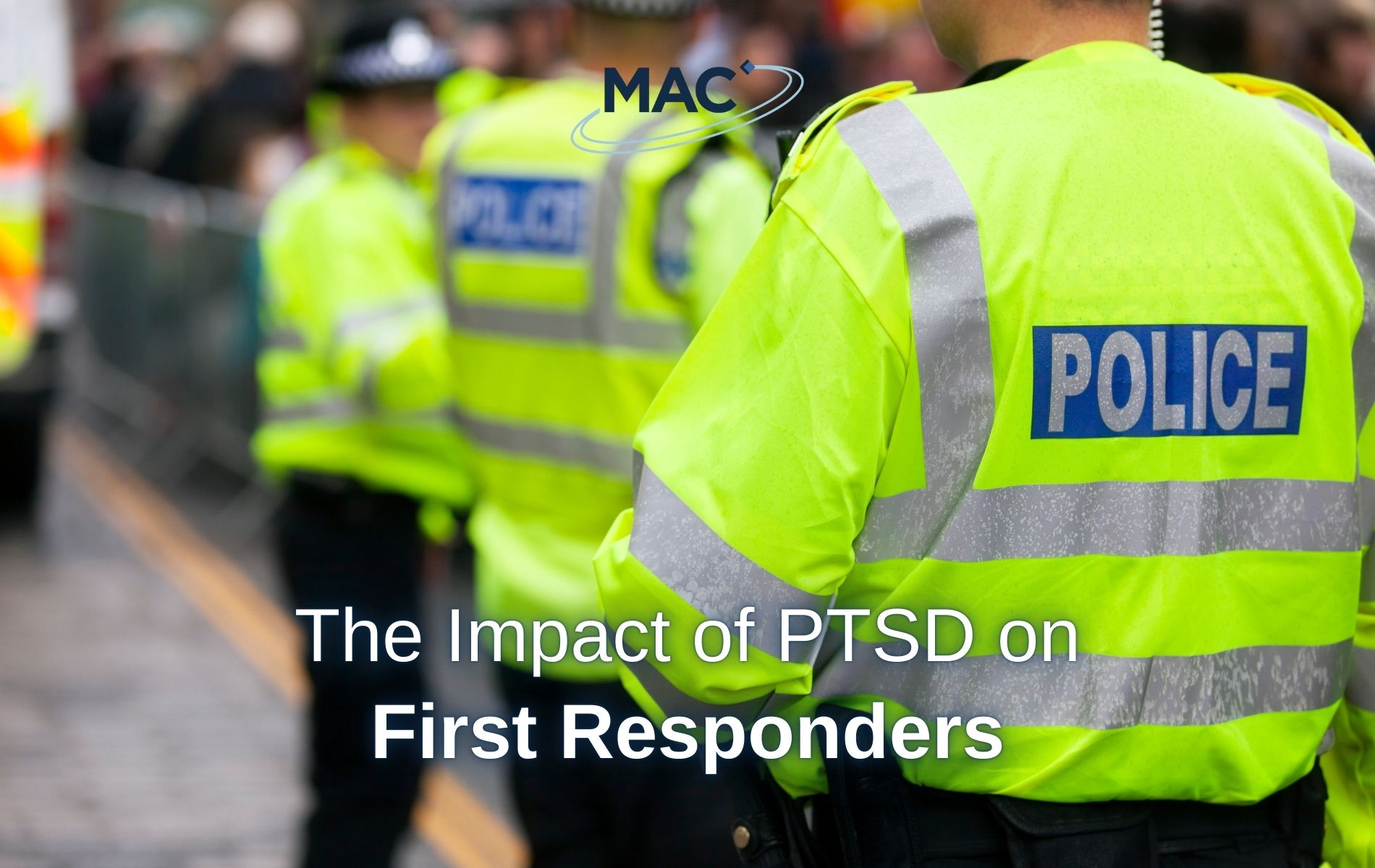Post-traumatic stress disorder, more commonly known as PTSD, is expected to affect one in ten people in the UK at some point in their lives. Women between the ages of 16 and 24 are the most likely to be diagnosed with PTSD, the age group 55 to 64 years old is the only age category where men are more likely than women to screen positive1. Certain occupational groups are also at greater risk of developing PTSD, so this Emergency Services Day, we are diving into the impact of PTSD on first responders.
What is PTSD?
Post-traumatic stress disorder is a condition that you may develop after experiencing or witnessing a traumatic event, such as a sudden death, a physical assault, or a serious accident or fatality2. A traumatic event is notable by its ability to provoke fear, helplessness, or horror in response to threat; sadly, around 50% of people experience a trauma in their lifetime3.
It is typical to experience short-term distress in response to trauma, but when it persists after a few months and begins to interfere with your daily life, it may be PTSD. Approximately 20% of people who experience trauma develop PTSD, which is a normal reaction to an abnormal circumstance3. If you have PTSD, your symptoms may include:
- Feeling on edge and a fear of people and the world around you
- Overwhelming negative emotions like anger, guilt, sadness, fear, or shame
- Feeling irritable and having aggressive outbursts
- Feeling numb or detached from your body or emotions
- Self-destructive or reckless behaviour
- Avoidance of situations that remind you of the triggering event
- Physical symptoms such as sweating, nausea, pain, or trembling
- Flashbacks, nightmares, or intrusive memories where you relive the traumatic event4.
What causes PTSD?
During a dangerous or potentially traumatic situation, your body stops normal function and temporarily pauses some bodily processes, such as memory processing and digestion. Until the danger passes, these functions do not resume. This means that your mind does not process the memory of the traumatic event the way it would normally. After the event, when the brain goes to process the trauma, it cannot because it does not exist in your memory stores. As a result, the brain views the trauma as happening in that moment. This causes distress as the brain is unable to recognise the trauma as a memory5. The distress of the event combined with this results in PTSD symptoms, which can lead to changes in cognition and brain structure6.
Many different types of traumatic events can lead to PTSD, including, but not limited to:
- Road traffic accidents
- Bereavement
- Natural disasters
- Sexual or physical violence
- Childbirth
- Certain professions where you are exposed to distressing images and events, such as military service, emergency services, and medical staff5.
How does PTSD impact first responders?
First responders include people who work in the police force, firefighters, paramedics, 111 and 999 call handlers, search and rescue teams, coastguard and lifeboat crews, and more. People in the emergency services are often witness to emotional and physical trauma in their line of work and may even experience it themselves. First responders tend to be at greater risk of developing PTSD than the general populace, with ambulance personnel (20 to 25%) and police officers and staff (up to 20%) at most risk7. It may also be the case that people experiencing symptoms are unaware that they meet the diagnostic criteria for PTSD.
Emergency services regularly make life-changing decisions in high-stakes situations, often saving lives, but sometimes their efforts are sadly unsuccessful. It can be difficult to separate yourself from witnessing the worst moment of someone’s life to move on to the next case where the same thing may happen again. This leaves first responders with little time to process traumatic events and a significant backlog of memories for the brain to work through7.
It is estimated that up to 70% of people with PTSD do not receive any professional help8. This may be because they do not realise that they have PTSD, despite knowing that they are not coping well after trauma or may struggle to express that they need help. If they do have a PTSD diagnosis, they may not be aware of the treatments available to help them recover, or they may have found previous PTSD treatments ineffective.
MAC Clinical Research is currently seeking people who have symptoms of post-traumatic stress disorder, but past treatments haven’t helped. You must be aged 18 to 65 and have symptoms of PTSD from a past trauma for at least six months (other eligibility criteria will apply). If eligible, you will receive up to £2,820 for your time and commitment, plus reasonable travel expenses will be paid.
For more information on how you can get involved, please visit our PTSD study webpage.
References
6 PMC – Traumatic stress: effects on the brain




